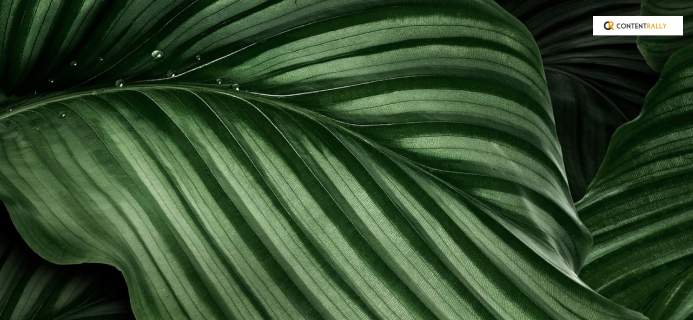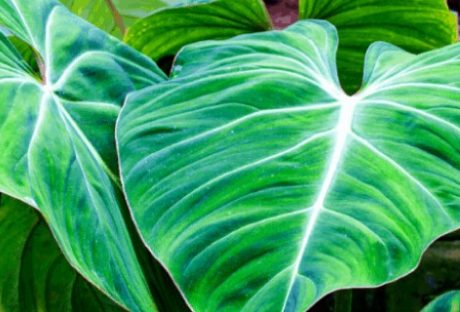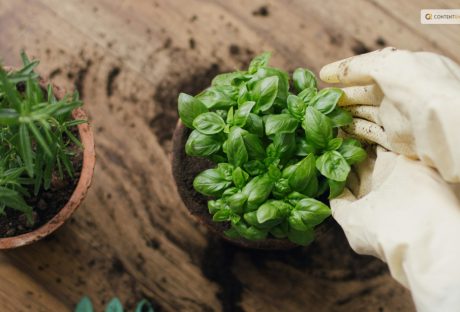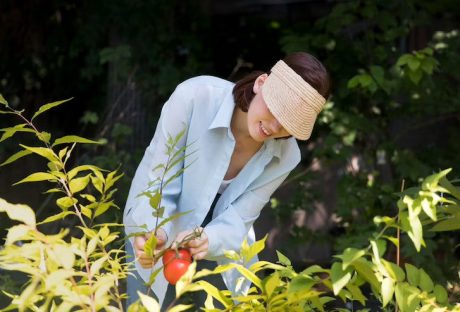Big leaf plants can add an aesthetic touch to your home. If you are an admirer of home decoration, you cannot miss indoor plants as a part of your decoration.
Indoor plants require very minimum sunlight, and they are pretty easy to take care of. But, most important of all– they keep your indoor environment refreshed and fill it with fresh oxygen.
So, if you want to decorate your sweet home with beautiful big leaf aesthetic plants, you need to check out the few recommendations I have here in this article.
10 Best Big Leaf Plants For Indoors
If you are looking for recommendations for indoor plants with big leaves, please check out the ten recommendations I have here.
1. Swiss Cheese Plant
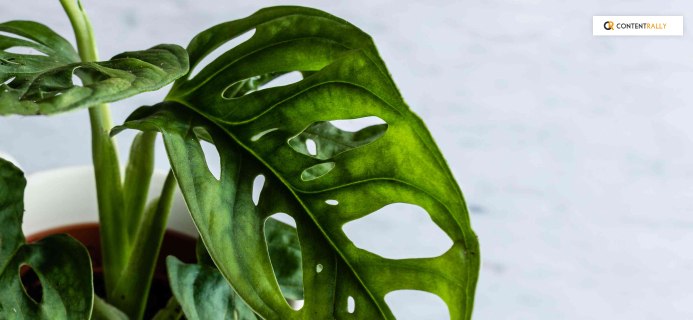
The botanical name of the Swiss Cheese Plant is Monstera deliciosa. This tropical beauty is enough to add a green touch to your indoors. It has big heart-shaped leaves to adorn your indoors. They do well if you keep them in indirect sunlight.
The heart-shaped leaves can grow up to 36 inches in length, and they are healthy for your indoor environment.
☀ Sun: They need bright but indirect sunlight.
🌡️Temperature: They are tropical plants, so you need to keep them in warm places. A temperature between 20°C – 30°C is ideal
💦Watering: You need to keep the soil wet most of the time. Watering them ⅔ times every week is enough.
🌷Type Of Soil: The soil needs to be moist and adequate fertilizers. A pH level of 5.5 to 7.5 works the best.
2. Dwarf Banana Plant
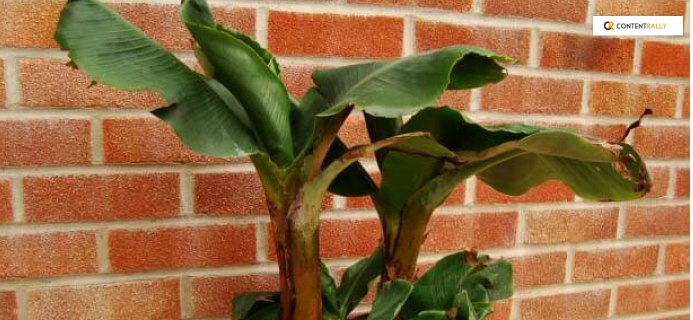
You can keep a large banana plant indoors. They are also big leaf plants. This is a tropical foliage plant that you can plant in a large plant. The leaves have quick growth, and the leaves are harmless to children and animals.
☀Sun: You can keep your Dwarf Banana Plant in full sunlight or in light shade.
🌡️ Temperature: They are big leaf tropical plants, so they enjoy a warm atmosphere. You can keep them at a temperature between 10°C to 33°C.
💦Watering: They need regular Watering– twice/ thrice every week in the warm season water them. Once every week is enough for the cold weather.
🌷Type Of Soil: The soil needs moisture. They need regular fertilizers.
3. Bird Of Paradise
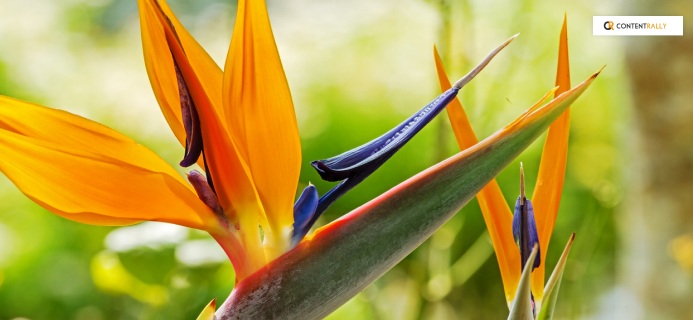
If you want some flowers to highlight the big leaf plants you have indoors, then Bird Of Paradise is just the right plant to choose. These plants have long-lasting flowers and waxy leaves that add extra beauty to your indoors.
☀ Sun: Keep them in semi-shade or in full Sun.
🌡️ Temperature: Medium Temperature between 18°C to 22°C is just fine.
💦Watering: Keep the soil moist. The soil should not get completely dry.
🌷Type Of Soil: They need fertilizers in spring. Well-drained soil is better.
4. Elephant Ear Plant
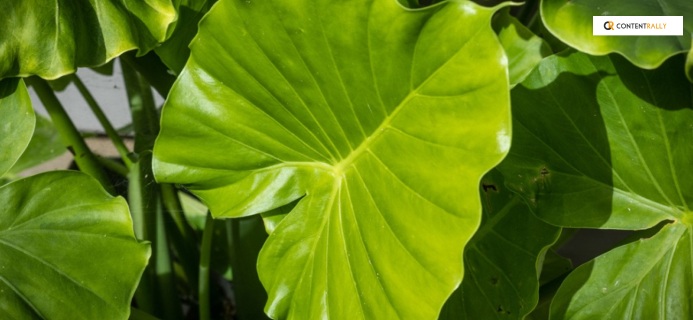
These are the cheapest big leaf house plants. You can pull them from anywhere and plant them indoors. You can find these plants growing outdoors. These plants are toxic for small children and animals, so if you want to keep them, you need to be very careful.
☀Sun: They don’t need full sunlight. Indirect bright sunlight is the best.
🌡️ Temperature: A temperature between 20°C to 30°C is best.
💦 Watering: The soil needs consistent moisture.
🌷Type Of Soil: Acidic, moist soil is the best.
5. Pinstripe Houseplant
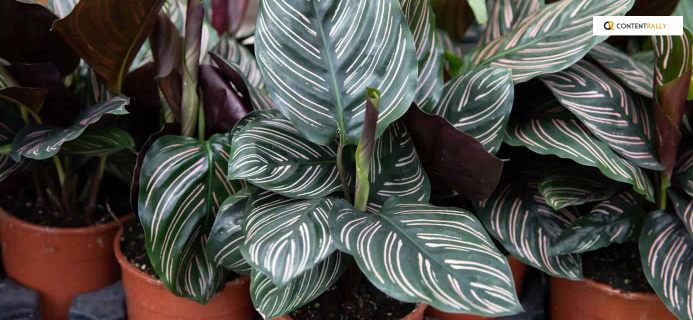
Not many tabletop plants look as pretty as the Pinstripe Houseplant. These big leaf plants have gorgeous jungle green color with pink stripes to compliment the big leaves. They aren’t too fond of direct bright sunlight. These plants are not harmful to animals and children.
☀ Sun: Keep them in indirect sunlight.
🌡️Temperature: 18°C to 30°C temperature is good enough.
💦Watering: You need to maintain the soil moisture.
🌷Type Of Soil: You peat and pebbles to balance the moisture.
You May Like To Read This: 10 Best Trailing Indoor Plants To Buy In 2022
6. African Mask Plant
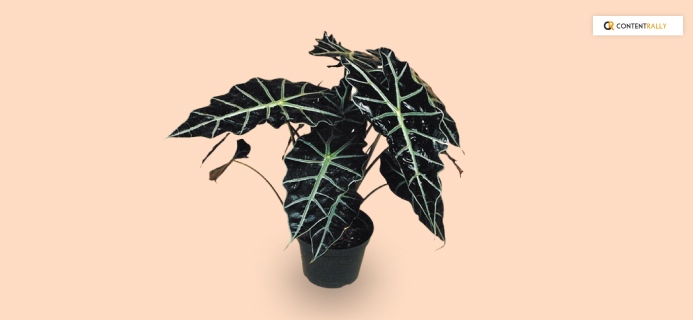
These big leaf plants are native plants of the Philippines. They get their name from their resemblance to an African mask. The large dark leaves can grow up to 18 inches. The silvery-white veins of the leaves make them even more attractive.
☀ Sun: Avoid direct sunlight. They love diffused sunlight.
🌡️Temperature: 15°C to 30°C is ideal for them.
💦Watering: They need regular watering during growth. Keep the pot moist and well-drained.
🌷Type Of Soil: Keep the soil well-drained using pebbles. Fertilize frequently after ⅔ months.
7. Majesty Palm
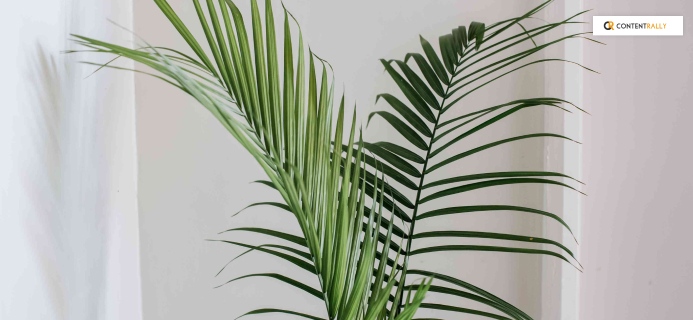
If you are looking for long leaf plants or big leaf indoor plants, the Majesty Palm is the one. They grow ten feet tall indoors. The leaves are toxic for animals and children, so you need to be careful if you are planting them indoors.
☀ Sun: Bright indirect sunlight is best.
🌡️Temperature: 18°C to 30°C is best.
💦 Watering: Water once after 1 or 2 weeks. Let the soil get dry before watering again.
🌷Type Of Soil: The soil is best if it is acidic.
8. Calathea Orbifolia
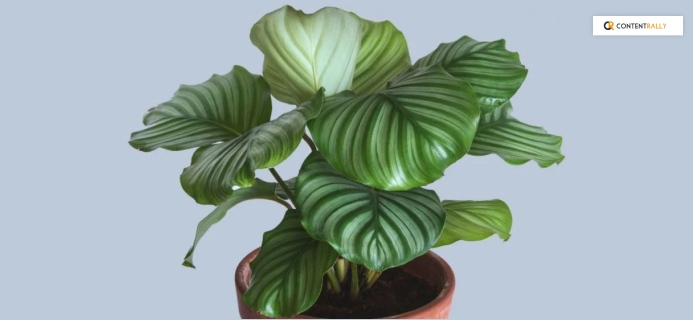
Are you looking for low-maintenance plants that keep the indoor air purified? Then there is no better option than Calathea Orbifolia. They can remove toxins from the air while also looking pretty with big textured leaves. There are silvery-white forks in the leaves that make them appear outwardly beautiful.
☀ Sun: They love bright sunlight but not direct sunlight.
🌡️Temperature: 18°C to 30°C is enough.
💦Watering: You can water them once or twice every two weeks.
🌷Type Of Soil: Well-drained soils rich in fertilizers are the best.
9. Philodendron Gloriosum
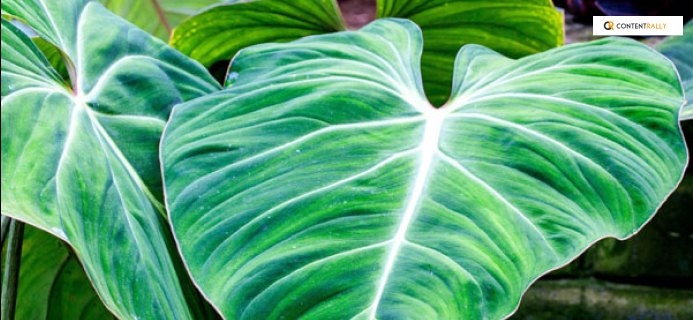
A native plant of Colombia, the Philodendron Gloriosum is a big leaf foliage plant. These plants love to crawl and climb. In humid weather, you can keep them indoors. These big leaf plants have gorgeous pink, light green, and white running across the leaves. The leaves, stems, and roots are toxic for humans and animals.
☀ Sun: Indirect and right sunlight is best.
🌡️Temperature: 7°C to 35°C is good enough.
💦Watering: The soil needs to be damp. You can water two to three times every week.
🌷Type Of Soil: Organic soil rich in fertilizers works the best.
10. Fiddle Leaf Fig
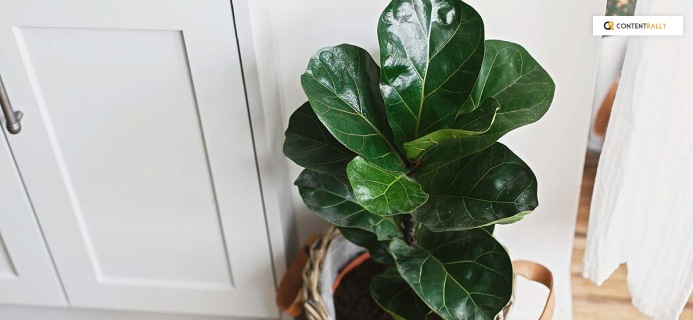
The fiddle-shaped leaves of the Fiddle Leaf Fig are large and waxy. They inhabit their pots quite well. These big leaf plants are poisonous to humans and animals. But they are aesthetic-looking bedroom plants, and they are gorgeous.
☀ Sun: These plants need bright sunlight. Do not keep them in the shade.
🌡️Temperature: 15°C to 30°C is good enough for them.
💦 Watering: Regular Watering is necessary.
🌷Type Of Soil: You need well-fertilized moist soil.
Frequently Asked Questions (FAQs):
Here are some frequently asked questions that you may find interesting.
Taking care of big leaf aesthetic plants is easy. You need to keep them in medium indirect sunlight and keep the potting soil moist. They don’t need frequent fertilizing; once or twice every year is enough.
The water, light, fertilizer, soil, and care are all crucial to growing your big leaf plants.
There can be several reasons for this; excessive Watering or little Watering can cause your plant to die. Varying sunlight and bad incompatible soil can also be the reason behind your indoor plant’s death.
The amount of Sun, water, air, and fertilizer your plant gets has an effect on the leaf size.
Bottom Line
If you want to grow big leaf plants indoors, then you can choose from these ten plants I have recommended here. All of these plants are low maintenance, and they are pretty in look. Aside from that, some of these plants purify your indoor environment.
Did you like this list? Please let us know in the comment; also, if you purchased any of them, let us know which once was your favorite.
Read Also:













